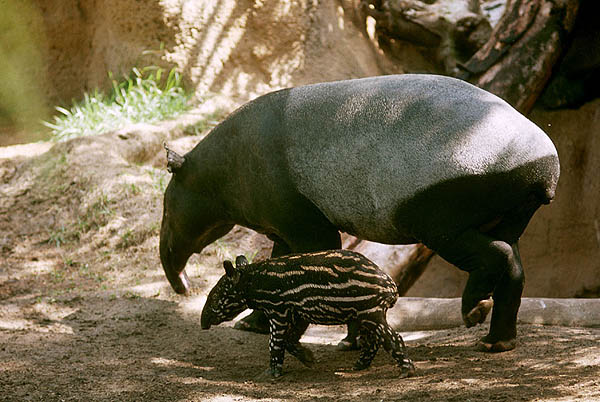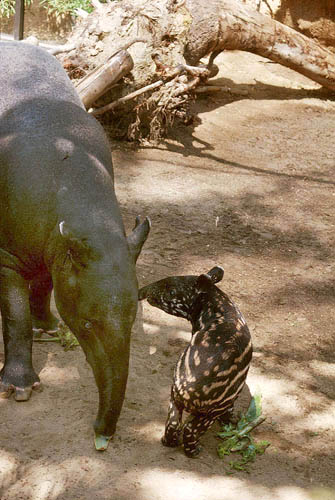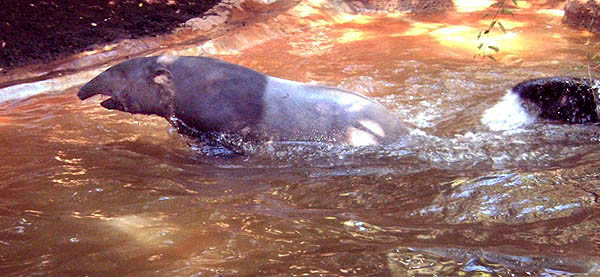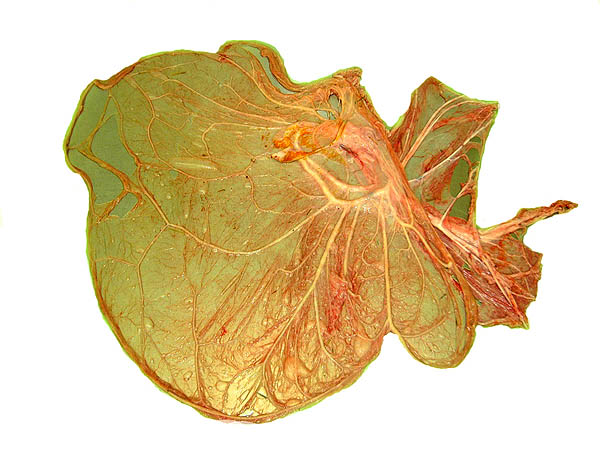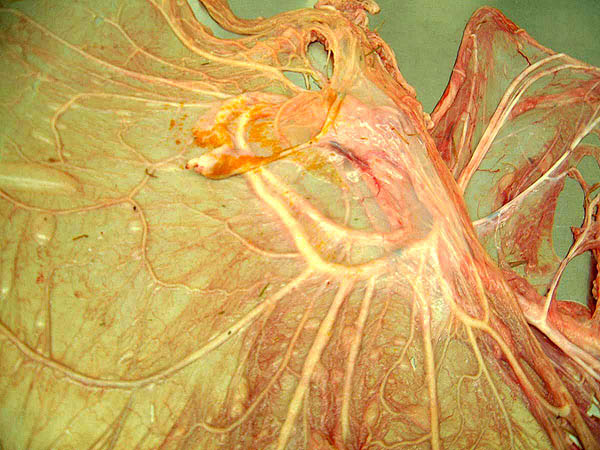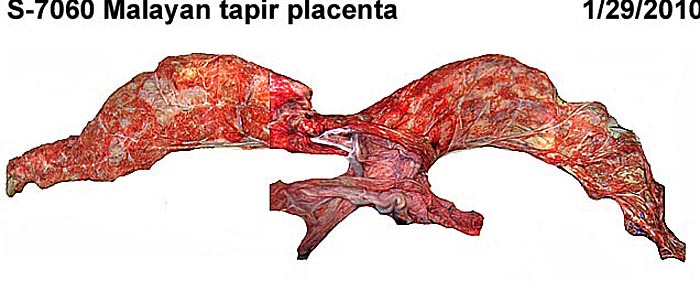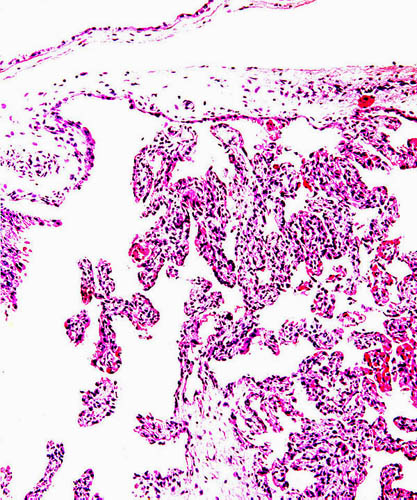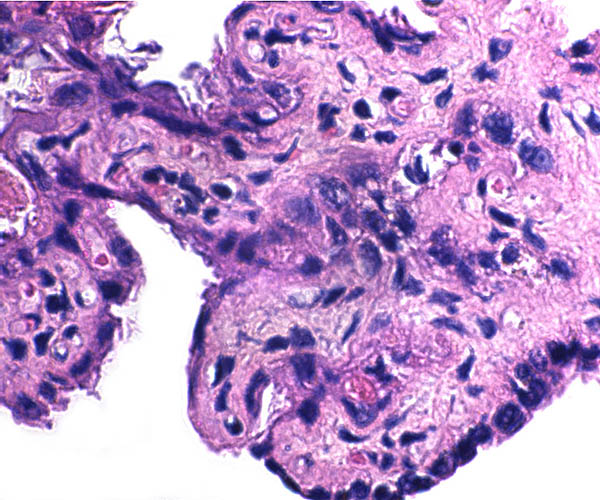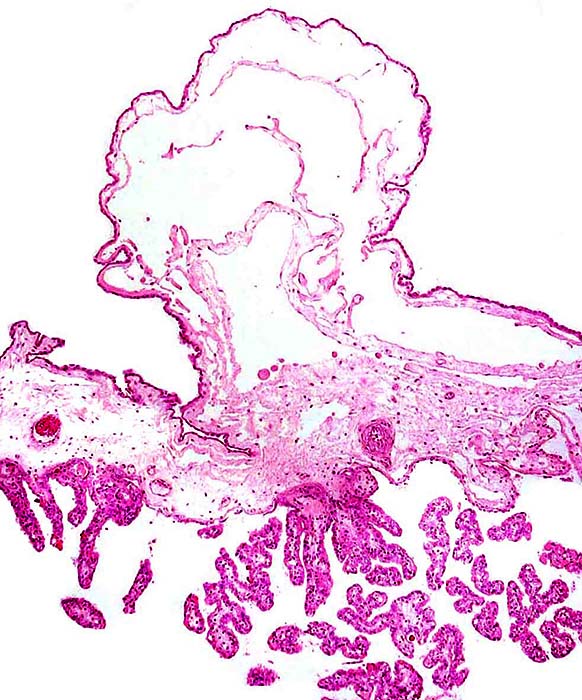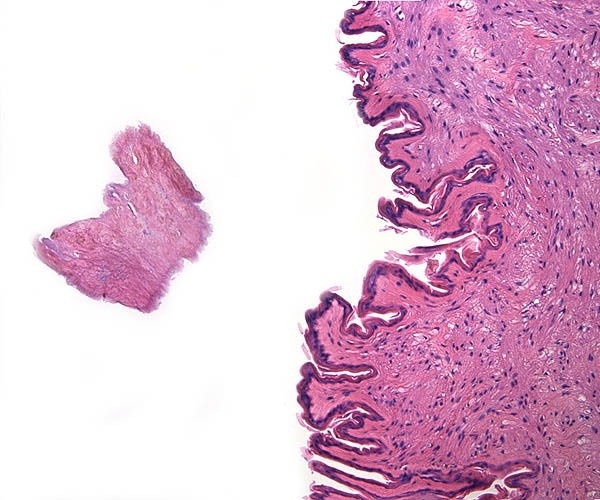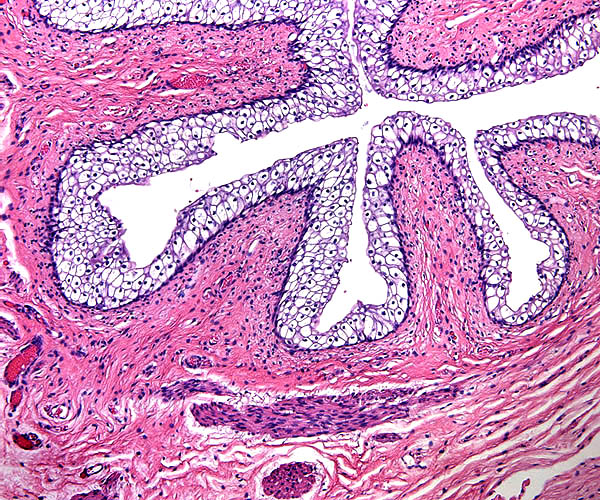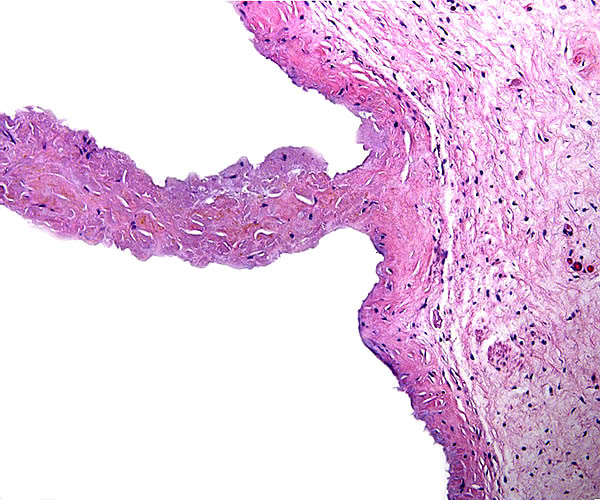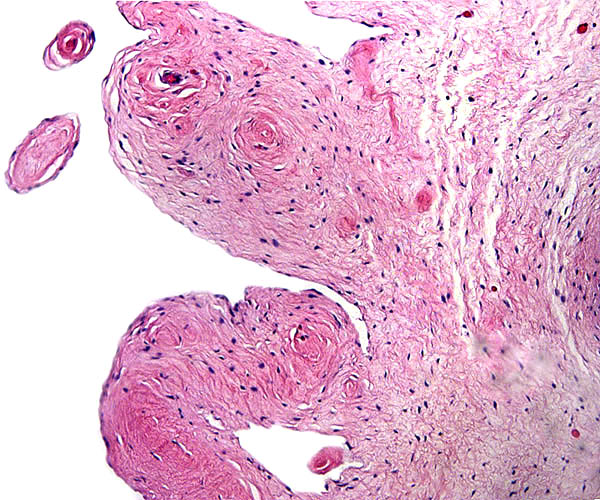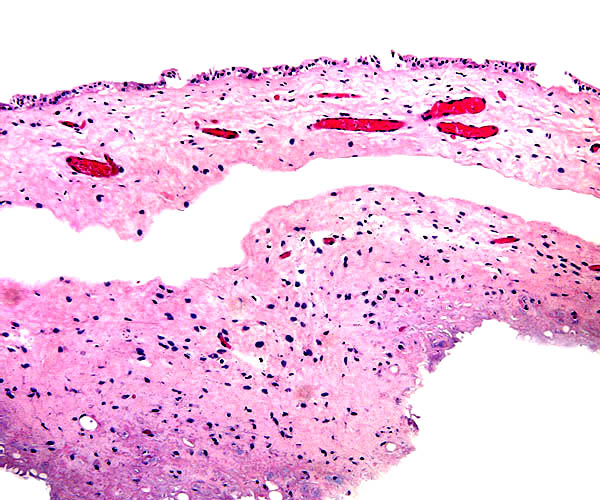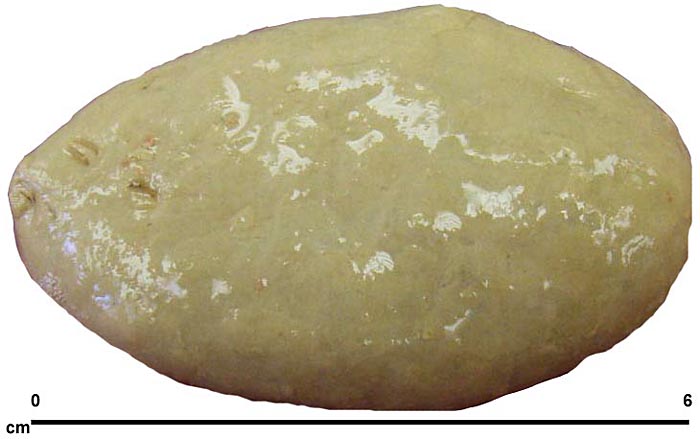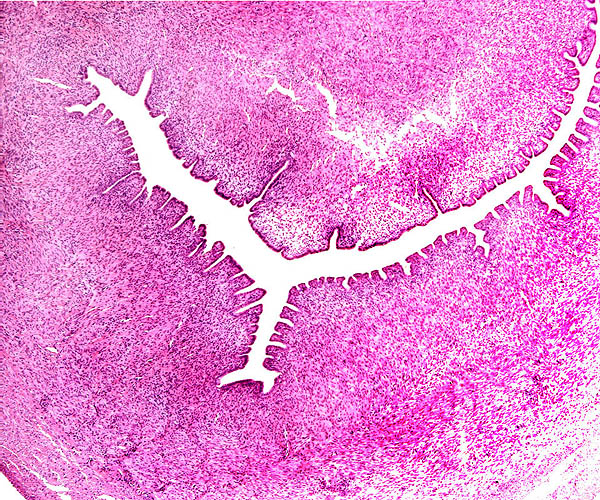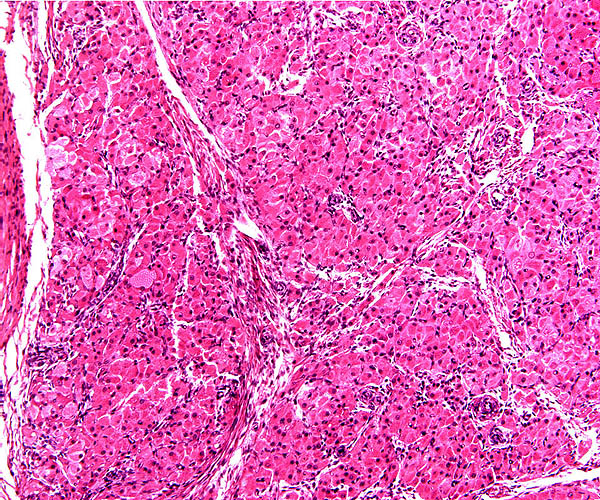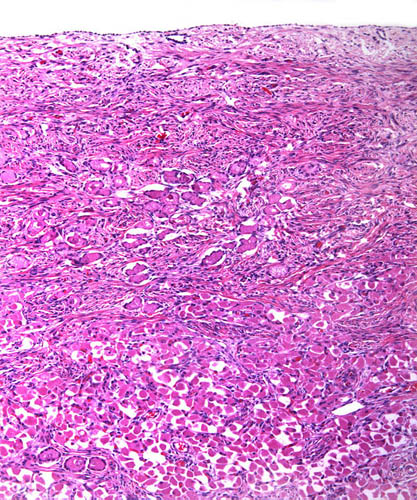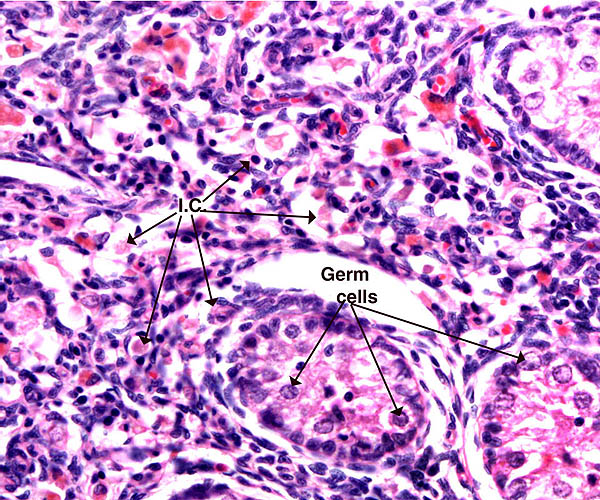13) Genetics
Houck et al. (2000) described the chromosomes of all four species of tapir in some detail. Tapirus indicus has the lowest number of chromosomes (2n=52, vs. 76 and 80 of the South American species). No hybrids have been described.
Phylogenetic relationships were sought by protein analysis (Graur et al., 1993); closer kinship to carnivores was thus uncovered. Ashley et al. (1996) studied mtDNA sequences and established that the South American species are all very similar, but quite distinct from the Malayan tapir.
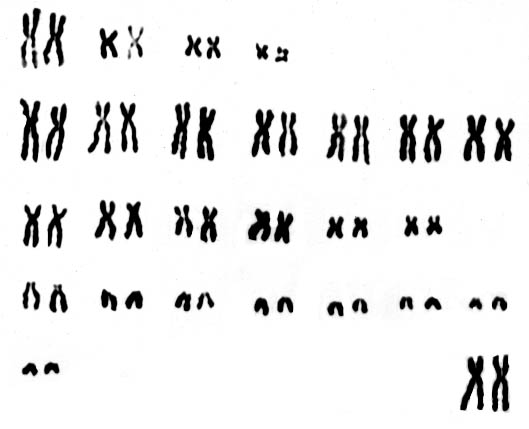
|
Karyotype of female Malayan tapir 2n=52.
|
14) Immunology
I know of no studies.
15) Pathological features
Trauma was the principal cause of death of the animals autopsied by Griner (1983). He also observed pneumonia and, more frequently, rectal prolapse. Barongi (1993) who provided a general survey of tapir husbandry emphasized the foot problems, helminths and rectal prolapse.
16) Physiologic data
I know of no studies.
17) Other resources
Cell strains of this species are available from CRES at the San Diego Zoo by contacting Dr. Oliver Ryder at: oryder@ucsd.edu.
18) Other remarks - What additional Information is needed?
It is imperative that more placentas be studied, especially implanted placentas and early implantations. In addition, endocrine studies during pregnancy and of the neonates are needed.
Acknowledgement
The animal photographs in this chapter come from the Zoological Society of San Diego. I appreciate also very much the help of the pathologists at the San Diego Zoo.
References
Ashley, M.V., Norman, J.E. and Stross, L.: Phylogenetic analysis of the perissodactylan family tapiridae using mitochondrial cytochrome c oxidase (COII) sequences. J. Mammal. Evol. 3:315-326, 1996.
Barongi, R.A.: Husbandry and conservation of tapirs. Int. Zoo. Ybk. 32:7-13, 1993.
Brown, J.L., Citino, S.B., Shaw, J. and Miller, C.: Endocrine profiles during the estrous cycle and pregnancy in the Baird's tapir (Tapirus bairdii). Zoo Biol. 13:107-117, 1994.
Dolinar, Z.J.: Uber die Omphaloplazenta der Perissodactyla. Anat. Anaz. (Suppl.) 120:637-640, 1967.
Gotch, A.F.: Mammals - Their Latin Names Explained. Blandford Press, Poole, Dorset, 1979.
Graur, D., Gouy, M. and Duret, L.: Evolutionary affinities of the order perissodactyla and the phylogenetic status of the superordinal taxa ungulate and altungulata. Mol. Phylogen. Evol. 7:195-200, 1997.
Griner, L.A.: Pathology of Zoo Animals. Zoological Society of San Diego, San Diego, California, 1983.
Houck, M.L., Kingswood, S.C. and Kumamoto, A.T.: Comparative cytogenetics of tapirs, genus Tapirus (Perissodactyla, Tapiridae). Cytogenet. Cell Genet. 89:110-115, 2000.
Kasman, L.H., McCowan, B. and Lasley, B.L.: Pregnancy detection in tapirs by direct urinary estrone sulfate analysis. Zoo Biol. 4:301-306, 1985.
Mossman, H.W.: Vertebrate Fetal Membranes. MacMillan, Houndmills, 1987.
Nowak, R.M.: Walker's Mammals of the World. 6th ed. The Johns Hopkins Press, Baltimore, 1999.
Puschmann, W.: Zootierhaltung. Vol. 2, Säugetiere. VEB Deutscher Landwirtschaftsverlag Berlin, 1989.
Ramsay, E.C., Moran, F., Roser, J.F. and Lasley, B.L.: Urinary steroid evaluations to monitor ovarian function in exotic ungulates: X. Pregnancy diagnosis in perissodactyla. Zoo Biol. 13:129-147, 1994.
Starck, D.: Säugetiere. In, Lehrbuch der Speziellen Zoologie (A. Kaestner, Founder). Vol. II Wirbeltiere. Teil 5/2. Gustav Fischer Verlag, Jena, 1995.
|
